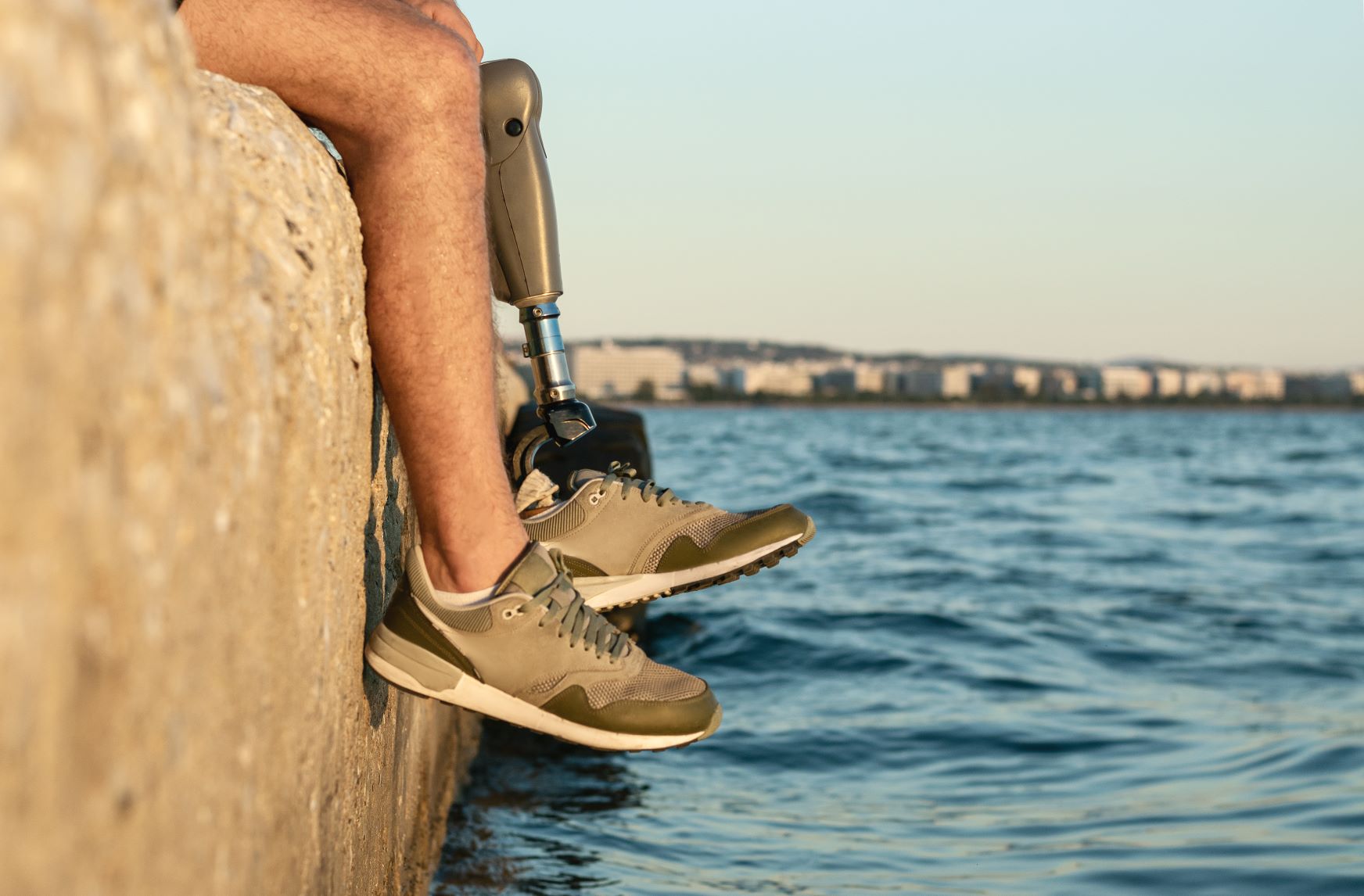PROSTHETICS
common prosthetic issues
It is extremely important to pay very close attention to the skin BEFORE and AFTER each usage, looking for abrasions or blisters, especially around the scar line, or any other sort of unusual mark that was not present prior to wearing the prosthetic. Also be aware of areas of redness that last more than 20-30 minutes. It is important to realize that you WILL most likely see redness, due to new pressures on your leg, and it is not usually a problem unless it lasts longer than 30 minutes.
If one of these problems presents itself, discontinue usage and call your prosthetist. If you cannot inspect the entire limb, a handheld mirror works well. This is something you will do for the rest of your lifetime, as the body goes through many changes that can and will affect the fit of the prosthesis. Checking your skin is ESSENTIAL and is one of the most important things that you can do for yourself as a new amputee.

Click on an issue below to read more
Phantom Pain
The word ‘phantom’ means something that you can feel but cannot see. After a part of the body, like an arm or a leg is amputated, it is common to sometimes feel that the limb is still there. This is called phantom sensation. If the person has pain as though the arm or leg is still there, it is called phantom pain.
Cause of Pain
The cause of phantom pain is not known but it likely happens because the nerves of the body are still telling the brain that the arm or leg is still there. There may be an increase in pain messages sent to the brain. Often the pain becomes less over time, especially as you are able to use a prosthesis.
Phantom pain is very real but not everyone will experience it. The pain may feel like burning, cramping, stabbing, or shooting pain. There are things that make the pain worse and things you can do that to help ease the pain.
.
Some things that can make the pain worse include:
- Being too tired, or stressed
- Too much pressure on the amputated limb
- Changes in the weather
- Poor circulation, or swelling
- An artificial limb that does not fit properly
To help ease the pain you can:
- Use massage, tapping and squeezing to desensitize the limb
- Slowly tighten and release the muscle in the limb
- Take your prescribed medication as instructed by your doctor
- Take a warm bath or shower massage, after the incision line is closed and healed
- If you have a prosthesis on, take is off for a few minutes
- If you do not have a prosthesis on, put it on and get active
- If there is swelling, try a shrinker or ace wrap
Sizing Your Socks
Figuring out the correct number of socks to apply over the liner can be tricky and will take some experimentation. A few signs that the prosthetic socket is too big/ loose and that you need to add socks are:
- Your locking pin goes straight down into the lock very quickly without resistance
- If you feel a lot of pressure on the front bone and at the bottom of the socket/ feel like all your weight is at the bottom
- While you are walking, the prosthesis starts to rotate on your leg/ your prosthetic foot turns in or out.
If you start to experience any of these, add socks until you feel tight in the prosthetic again. It is important to remember that there is also the possibility of adding too many socks. A couple signs that you have added too many and need to take some off include stubbing your toe when walking and feeling uncomfortable tight in the prosthetic socket.
Socks should always be work OVER the gel liner with careful attention to clearing the locking pin through the hole at the bottom of the sock.
Skin Irritation
Unfortunately a common issue among amputees. Reach out to your prosthetist for guidance if you begin to experience skin irritation.
Instability or Control Issues
If you are experiencing any instability or begin to feel you are unable to maintain controlled forward motion, reach out to your prosthetist for evaluation and adjustment. We are adament about our patients safety and comfort, so don’t delay.
Socket Discomfort
Socket discomfort can arise from time to time and can usually be eliminated through minor adjustment. There are multiple reasons discomfort can occur and your prosthetist will be able to evaluate and determine the best remedy. Give them a call.
